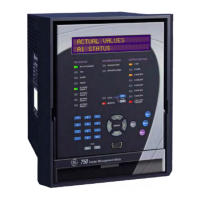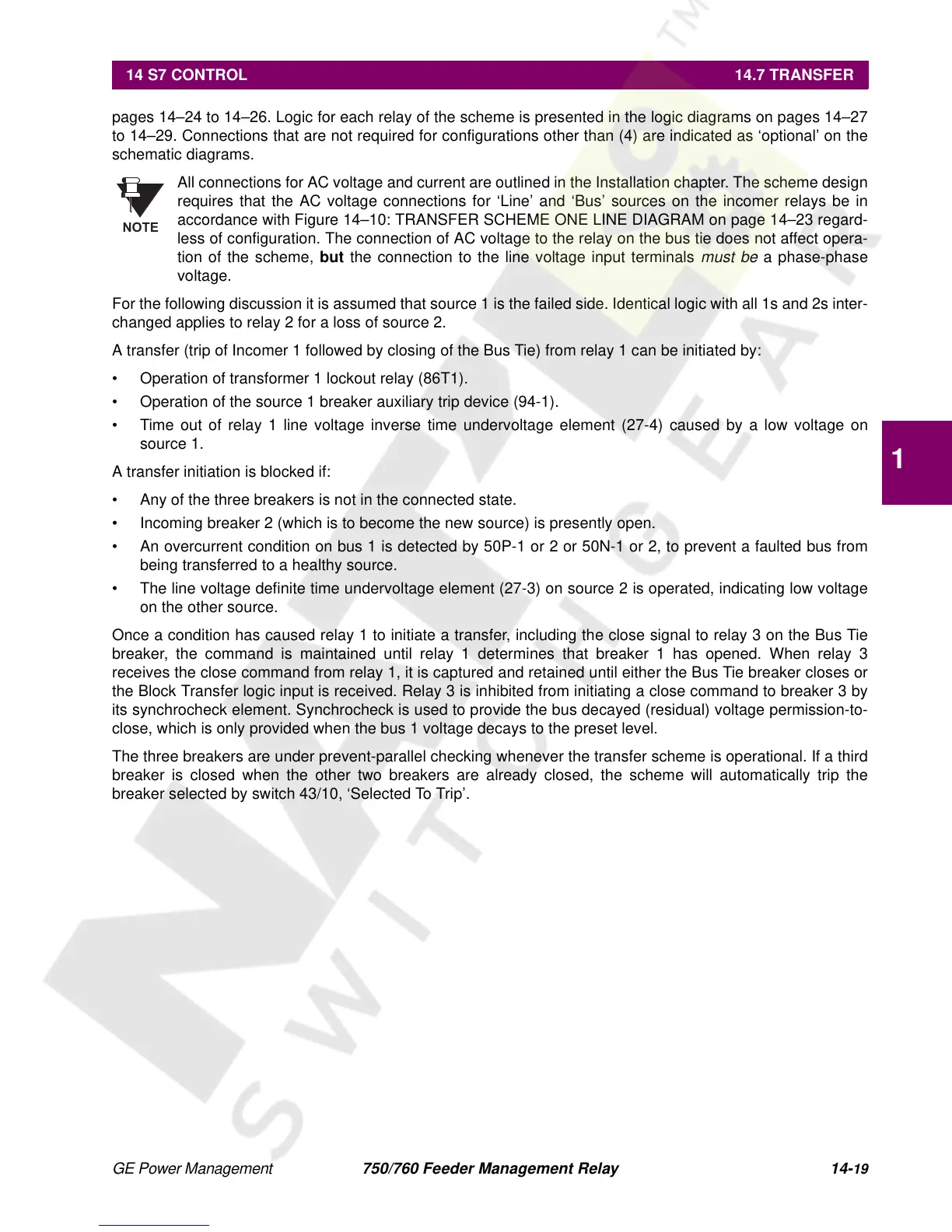GE Power Management
750/760 Feeder Management Relay 14-
19
14 S7 CONTROL 14.7 TRANSFER
14
pages 14–24 to 14–26. Logic for each relay of the scheme is presented in the logic diagrams on pages 14–27
to 14–29. Connections that are not required for configurations other than (4) are indicated as ‘optional’ on the
schematic diagrams.
All connections for AC voltage and current are outlined in the Installation chapter. The scheme design
requires that the AC voltage connections for ‘Line’ and ‘Bus’ sources on the incomer relays be in
accordance with Figure 14–10: TRANSFER SCHEME ONE LINE DIAGRAM on page 14–23 regard-
less of configuration. The connection of AC voltage to the relay on the bus tie does not affect opera-
tion of the scheme,
but
the connection to the line voltage input terminals
must be
a phase-phase
voltage.
For the following discussion it is assumed that source 1 is the failed side. Identical logic with all 1s and 2s inter-
changed applies to relay 2 for a loss of source 2.
A transfer (trip of Incomer 1 followed by closing of the Bus Tie) from relay 1 can be initiated by:
• Operation of transformer 1 lockout relay (86T1).
• Operation of the source 1 breaker auxiliary trip device (94-1).
• Time out of relay 1 line voltage inverse time undervoltage element (27-4) caused by a low voltage on
source 1.
A transfer initiation is blocked if:
• Any of the three breakers is not in the connected state.
• Incoming breaker 2 (which is to become the new source) is presently open.
• An overcurrent condition on bus 1 is detected by 50P-1 or 2 or 50N-1 or 2, to prevent a faulted bus from
being transferred to a healthy source.
• The line voltage definite time undervoltage element (27-3) on source 2 is operated, indicating low voltage
on the other source.
Once a condition has caused relay 1 to initiate a transfer, including the close signal to relay 3 on the Bus Tie
breaker, the command is maintained until relay 1 determines that breaker 1 has opened. When relay 3
receives the close command from relay 1, it is captured and retained until either the Bus Tie breaker closes or
the Block Transfer logic input is received. Relay 3 is inhibited from initiating a close command to breaker 3 by
its synchrocheck element. Synchrocheck is used to provide the bus decayed (residual) voltage permission-to-
close, which is only provided when the bus 1 voltage decays to the preset level.
The three breakers are under prevent-parallel checking whenever the transfer scheme is operational. If a third
breaker is closed when the other two breakers are already closed, the scheme will automatically trip the
breaker selected by switch 43/10, ‘Selected To Trip’.
NOTE

